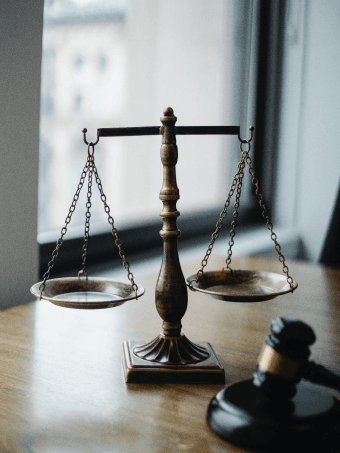Applying for a trademark on your own
Process
To begin the application, you must send details of your trademark and the goods or services you want to use your trademark on to the designated Intellectual Property Office (IPO).
Your application must include the following:
Details of what you want to register, for example, the written words or slogan you want to use, or an illustration
The trademark classes and terms you wish to register
After you send the application, the IPO will:
Examine your application
Search for similar trademarks, and contact the holder directly if they find one
Publish your application for oppositions
If your application is not opposed, your trademark will be registered two weeks later. If there are any issues, the IPO will let you know. You will have to resolve them before you can register your trademark. After that, you can either talk to the person making the opposition, withdraw your application, or defend your application legally.
The time and conditions of the process tend to differ between different IPOs, read more about the process of registering a trademark on your own in the United Kingdom and in the United States.
Costs
The average cost of trademark application is generally between $250-$350. The trademark fees depend mainly on two aspects:
The number of trademarks you seek to register
The number of classes of goods and services you intend to register under. An applicant may only apply for a single trademark in an application.
When filing an application to trademark a business name yourself, you should count on paying between $250 and $750. This cost, however, does not include costs for dealing with objections or opposition proceedings, which can drive the overall cost up to $3,500 for a single application. Find out more about trademark application costs in different countries.
Things to consider
When choosing a name for your company, you should avoid words that are too generic, descriptive, or confusingly similar to existing trademarks. Your trademark name shouldn’t contain descriptive information regarding an ingredient, quality, characteristic, function, feature, purpose, or use of the product or service. Lack of distinctiveness is one of the most common reasons why business owners receive a rejection from the trademark office when trying to register brand assets without professional legal advice.
Another major challenge that self-filed trademarks face is the selection of classes of goods and services. There are currently 45 trademark classes to choose from. There may be adverse consequences if you choose the incorrect or too many classes when you draft your own trade mark application. Not only do you risk overpaying for your application, but if you attempt to seek registration in a class that does not reflect your business’s goods or services, you may not end up getting the protection you need in the areas of goods or services that are most relevant to your brand. Likewise, if you choose too many classes, you may pay for something you do not actually need.
While registering a trademark on your own is clearly the cheapest option, as only official administrative fees need to be paid, this option also incurs the highest risk of refusal. On average, about 70-80% of applications filed by individuals on their own are successful. This is mainly due to the often limited experience, understanding of the process and suboptimal assessment of the trademark’s distinctiveness or selection of appropriate goods and services.
Applying for a trademark through Trama
Thanks to our experienced trademark attorneys and technology, we make the trademark registration process seamless. Trama provides legal representation in all countries served, meaning that you can file trademarks across the world regardless of where you are from. All we need from you is information about the intended owner of the trademark selection of relevant goods & services.
Process
1. Free lawyer's check
We always start with verifying whether your trademark meets all the criteria required for registration. You will receive the assessment from our experienced legal team within 24 hours. In the result, you will find the evaluation of the overall registrability of your trademark, risk of opposition by similar trademarks, recommended classes of goods & services for your application form and a price estimate.
2. Application drafting
After we've received your payment, our legal team will get in touch with you to prepare a draft submission. Once you've approved it, we'll submit your application to the corresponding trademark office(s). After that, we'll notify you about any status changes in your application. You can also find the status in your dashboard if you have an account.
3. IPO examination
The whole process takes about 3-12 months, depending on the country. You can find a detailed list of processing times here. During this process, your trademark application will go through multiple stages: first, the initial examination, where the intellectual property office evaluates the formal aspects of the application, followed by the publication for opposition.
4. Registration
After the registration of your trademark, you'll receive the certificate of registration. The validity of your trademark is 10 years, counting from the date of filing.
Costs
The price depends on the number of countries and classes you need. It consists of our service fee and government fees (charged by trademark offices). You can find our detailed price list here. The fee covers trademark eligibility check and similarity screening, drafting of goods & services specification, preparation and filing of the application, expert advice along the way and government fees charged by the IPOs. Also, we will act as your representatives and forward any notifications from trademark offices.
Bringing the best of both sides, a dedicated service (such as Trama) balances quality and cost. Streamlined and, in many cases, automated processes allow these service providers to compete in price whilst maintaining the high quality of service provided, resulting in above-average chances of a successful application.
The table below presents an overview of the respective advantages and shortcomings associated with each option for registering a trademark.
| On your own | Trademark attorney | Trama |
|---|---|---|---|
Application success | MODERATE | HIGH | VERY HIGH |
Ease & convenience | MODERATE | MODERATE | VERY HIGH |
Speed | MODERATE | MODERATE | VERY FAST |
Cost | LOW | VERY HIGH | MODERATE |
Trademark registration is a tricky process that is hard to navigate without appropriate legal expertise and experience. Therefore, it is highly recommended to contact a professional trademark attorney who can considerably ease trademark registration for you. Many business owners initially feel confident enough to go through the application process on their own, only to then get rejected and forced to refile. You can easily avoid this costly and time-consuming mistake by working with an experienced trademark service provider.


